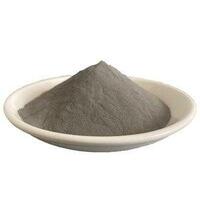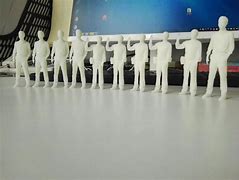**The Secret Sauce of 3D Printing: What’s Hiding in Your Filament?**
(What Is 3d Printing Material)
Imagine building a castle layer by layer, but instead of sand, you’re using melted plastic, metal, or even chocolate. That’s the basic idea behind 3D printing. But here’s the thing: none of it works without the right materials. Think of these materials as the ink in your printer—except this ink can turn into anything from a toy car to a prosthetic hand. Let’s dig into the stuff that makes 3D printing possible.
First up, plastics. These are the rock stars of 3D printing materials. PLA (polylactic acid) is the friendly beginner option. It’s made from cornstarch or sugarcane, smells like pancakes when melted, and comes in colors that could rival a candy store. It’s great for doodads that sit on your desk, like phone holders or figurines. But if you need something tougher, ABS (acrylonitrile butadiene styrene) steps in. This is the stuff LEGO bricks are made of. It’s sturdy, handles heat better, and survives rough treatment. Just don’t melt it in your kitchen—it smells like burnt plastic.
Then there’s PETG, a middle ground between PLA and ABS. It’s clear, bends without snapping, and resists water better than its cousins. If you’ve ever used a soda bottle, you’ve touched PET plastic. PETG is its tougher, 3D-printed sibling.
But wait—what if you want something flexible? TPU (thermoplastic polyurethane) is your answer. This rubber-like material can squish, stretch, and bounce. Think phone cases, shoe soles, or even squishy robot wheels. It’s like printing with gummy bears, minus the stickiness.
Now, metals. Yes, metals. Fancy printers use powdered aluminum, steel, or titanium, melting them with lasers or binding them with glue-like agents. The result? Parts strong enough for airplanes or race cars. Titanium implants for bones? Done. Custom gears for a motorcycle? Easy. Metal printing isn’t for your home workshop, though. It’s pricey and needs industrial machines.
Resins are another game. These liquid materials harden under UV light, creating super-detailed models. Dentists use resin to print crowns. Artists use it for jewelry with patterns finer than a spiderweb. But resin printing is messy. You’ll need gloves, goggles, and patience to wash off sticky leftovers.
Ever heard of printing with wood or ceramic? Mix wood fibers into PLA, and you get a material that looks and smells like sanded pine. Ceramic powders turn into vase-like objects after baking in a kiln. There’s even edible filament for chocolate or sugar sculptures. Your 3D printer could double as a pastry chef.
Materials matter because they decide what your print can do. A PLA dinosaur will crumble in a hot car. An ABS wrench might survive your garage. A resin bracelet could snap if dropped, while a metal one lasts decades. Choosing the wrong material is like using crayons for a oil painting—it just won’t work.
Scientists keep cooking up new materials. Conductive inks let printers make circuits. Biodegradable filaments break down in compost bins. Some labs experiment with “living” materials filled with cells that grow over time. Imagine printing a house frame with concrete filament, then watching plants crawl over it.
(What Is 3d Printing Material)
The magic of 3D printing isn’t just the machine—it’s the materials. They turn digital blueprints into real, usable objects. Whether you’re printing a prototype for a spaceship or a custom cookie cutter, the right material makes it possible. Next time you see a 3D-printed object, ask: what’s hiding inside? The answer might surprise you.
Inquiry us
if you want to want to know more, please feel free to contact us. (nanotrun@yahoo.com)

